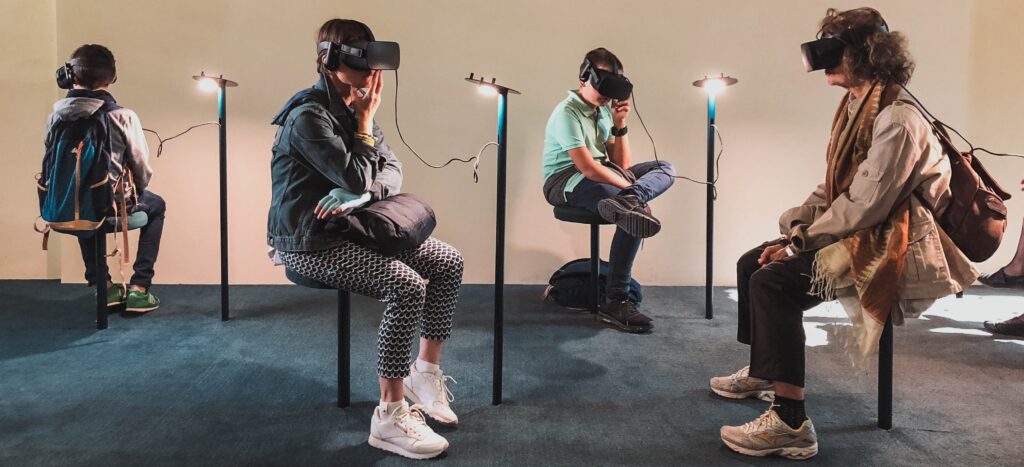New discoveries, new adventures, new consumer insights
by Mark Purdy

More and more companies are turning to the emerging metaverse as a way to revitalize the customer relationship by incorporating more elements of interactivity, personalization, and adventure into their customer interactions. Put simply, the metaverse is essentially a collection of 3D virtual worlds where users can interact, socialize, and exchange digital products and services in a variety of different environments. The metaverse can help put consumers in the driver's seat in at least three main ways:
1) creating new ways to discover and explore products;
2) helping to blend the physical and virtual experiences of products in more meaningful ways;
3) re-establishing connections between people and brands through artificially intelligent bots called “digital humans” who can interact with users in virtual environments.
Create new ways to discover and explore products
A new car, a new home, a trip to an exotic location – many high-value buying decisions are difficult to make in a static online environment with limited opportunities to explore, test and recommend products. But many companies are already using the metaverse to change that.
For Celebrity Cruises, a cruise line headquartered in Miami, Florida and part of the Royal Caribbean group, the metaverse offered a way to reconnect with potential passengers after the pandemic's devastating impact on the travel industry. It launched Celebrity Beyond, the metaverse's first virtual cruise ship. Prospective passengers can take a 360-degree tour of the liner before setting sail, enjoy a stroll in the Grand Plaza, the ship's centerpiece, or relax in the Rooftop Garden or Sunset Bar. They can talk to AI-enhanced avatars of the ship's captain ship and its designers to learn more about the ship's design and range of services. For mainland lovers, Celebrity Beyond also offers virtual tours of many of its destinations, including Japan, the Caribbean, Alaska, and Europe.
Buying a new car is another major expense that requires consumers a lot of time to get to know and try out the products. The Fiat Metaverse Store puts the customer in the driver's seat of a virtual version of its new 500, La Prima by Bocelli, with the possibility of exploring the driving and infotainment functions, personalizing the car set-up and making a virtual test drive on La Pista 500, a test circuit that winds along the roof garden of the historic Lingotto building in Turin.
In other cases, brands are using the metaverse to help customers better understand where their products come from or the processes and technologies behind them. Global automaker Hyundai created Hyundai Mobility Adventure, hosted on Roblox, to help especially younger consumers learn more about advanced mobility solutions. Chipotle Mexican Grill, a California-based global restaurant chain, is using its Chipotle Burrito Builder on Roblox to offer customers an interactive burrito-making experience. Customers can grill, season and stir a virtual guajillo steak using the grill simulator, and earn credits for real food. They can teleport to the chain's opening in 1993, talk to Chipotle's head chef in a virtual kitchen, and try their hand at rolling a virtual burrito.
Merge physical and virtual product experiences in more meaningful ways
Unlike traditional e-commerce, where consumers largely ordered physical items online and consumed them offline, the metaverse offers much broader opportunities to blend virtual and physical products. Think of Charli Cohen, a rapidly growing London-based influencer and fashion brand, whose business model focuses on the production of limited physical editions of clothing – from sustainable fabrics produced in Milan – together with virtual counterparts that can be used in gaming, virtual reality, and metaverse environments. In partnership with the iconic Pokémon gaming company and Selfridge department store, Charli Cohen has launched Electric City, where customers can browse and purchase Charli Cohen's Pokémon-branded physical fashion items or buy limited edition digital wearables .
The effervescent bubbles inside a bottle of Coca-Cola are a symbol of popular culture all over the world. On International Friendship Day 2022, Coca Cola celebrated its second anniversary in the metaverse by holding a launch of digital drawings inspired by the bubbles inside a Coke bottle for owners of digital collectibles. Coca Cola has used other digital launches to celebrate Pride Month and Halloween. In 2022, it launched its experimental Starlight range of physical sodas, alongside a digital marketing campaign in which consumers could access a concert by singer-songwriter Ava Max based on the metaverse by scanning a code on the cans.
Digital twins – virtual replicas of people, objects and places programmed to have the same physical properties as the real ones – will play a vital role in this physical-virtual fusion. I interviewed Nathanael Lumbroso, co-founder of Treedis, an Israel-based company that uses digital twins to connect the physical world to the metaverse in industries such as retail, real estate, hospitality and travel, manufacturing, and even the museums and galleries. During the Covid-19 lockdown in 2020, Treedis built a complete digital twin of the City of David and the entire Old City of Jerusalem, attracting over one million visitors a month to the immersive experience. Says Cohen: "With the digital twin we can really start telling the story of the city in an immersive way, recreating the feeling of historical music, interviews with archaeologists and animated characters, all in six languages."
Brands are also turning to the metaverse for more unified, realistic and personalized interactions, through avatars of AI-enhanced agents, also called “digital humans”. Hanwa Life, a major life insurance company in South Korea, has developed Hannah, a virtual financial planner that offers advice to millennial and Gen-Z clients. Aimedis, an e-health platform, has an AI-powered digital assistant called Ava, which can help patients, doctors, and other healthcare professionals access consultations and support services in the medical metaverse platform Avalon. Voicehumans created Lia, a digital personal shopper that helps shoppers make shopping and entertainment decisions in malls.
Challenges and imperatives
While the metaverse potentially offers the greatest opportunity since the internet to reimagine the consumer experience, many hurdles remain. Fundamentally, the metaverse is a game changer for consumer experiences and CX strategies. The following imperatives can help companies launch their own metaverse initiatives:
1. Master the art of the "drop"
Consumer experiences in Internet-based e-commerce were largely about the quality of search and online advertising experiences. Social media relied on a prepared tweet or video. In the metaverse, consumer marketing and advocacy will be about managing "droplets": virtual collectibles such as artwork, drawings, and memorabilia, which are sporadically dropped into customers' digital wallets to reward loyalty, promote new releases, or simply reinforce brand values. For example, for its “Keep It Real Meals” campaign, Burger King has launched a series of digital memorabilia accessible via a QR code on burger boxes, featuring celebrities such as Nelly and Huddy. Iconic fashion house Gucci has staged a sale of digital fashion items to 5,000 of its most loyal followers living on the New Tokyo site on the metaverse platform Discord. Celebrity Cruises is auctioning digital artwork created by Brazilian sculptor Rubem Robierb. Auctioning introduces many new elements for CX practitioners to consider: choosing the right time and place, incorporating elements of surprise and wonder, creating NFTs that reinforce brand values and identity, and forging new partnerships – with celebrities, artists, digital personalities and others.
2. Opportunities to play
Marketers have long used games and contests to engage customers: a quiz printed on a box of cornflakes or a golden ticket inside the box of a candy bar. But in the metaverse, games and contests will be at the heart of the consumer experience. In Gucci Vault, players can compete to earn vault boxes to enter sweepstakes for digital cash and collectibles. In Electric City, Charli Cohen's customers can equip themselves with a digital wallet, search for hidden Pikachu characters, and participate in treasure hunts where they can win physical products and digital collectibles. In Louis Vuitton's The Game, millions of players competed to find 200 digital candles (representing the company's 200th anniversary), to enter a raffle that awarded one of ten digital postcards created by famous designers.
3. Follow the data trail
The merging of the metaverse and physical environments offers the opportunity to gain new analytical insights into consumer behavior and experiences. As Lumbroso noted: “With metaverse-based applications, we can begin to better understand consumer experiences, profiles and behaviors. We can see their journey through the store or showroom, where their gaze lingers, from which angles they view the products, and so on. All these elements provide new and important information to strategic planners and marketers». Being able to switch between the virtual and physical worlds will become key to understanding consumer behavior and experiences for marketers, product designers, store planners and CX professionals of all types.
New discoveries, new adventures, new consumer insights – the metaverse presents a unique opportunity to reinvent the consumer experience across multiple industries. Marketers, business planners, and product developers of all stripes need to seize the opportunity now.
Mark Purdy is an independent business and technology consultant based in London.






